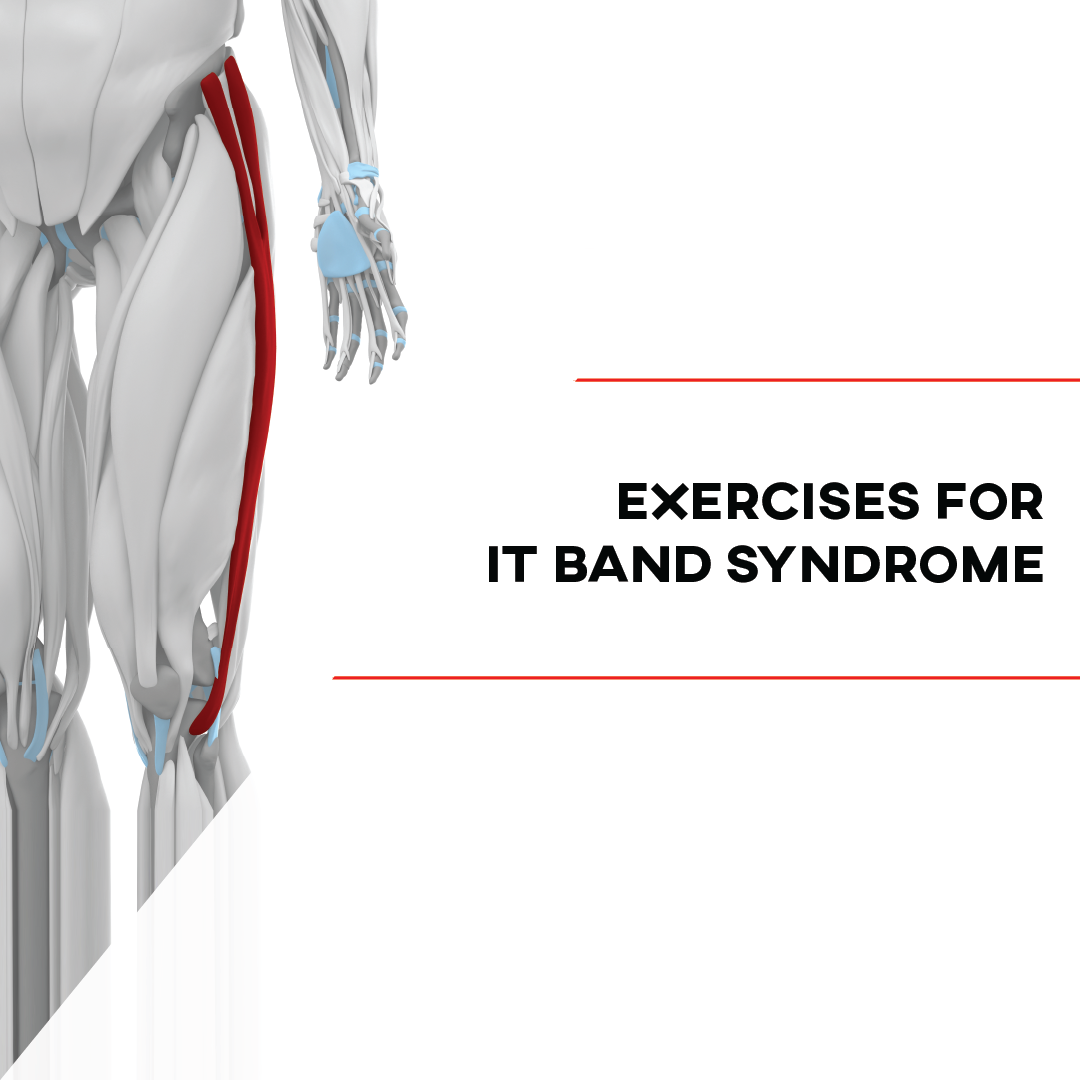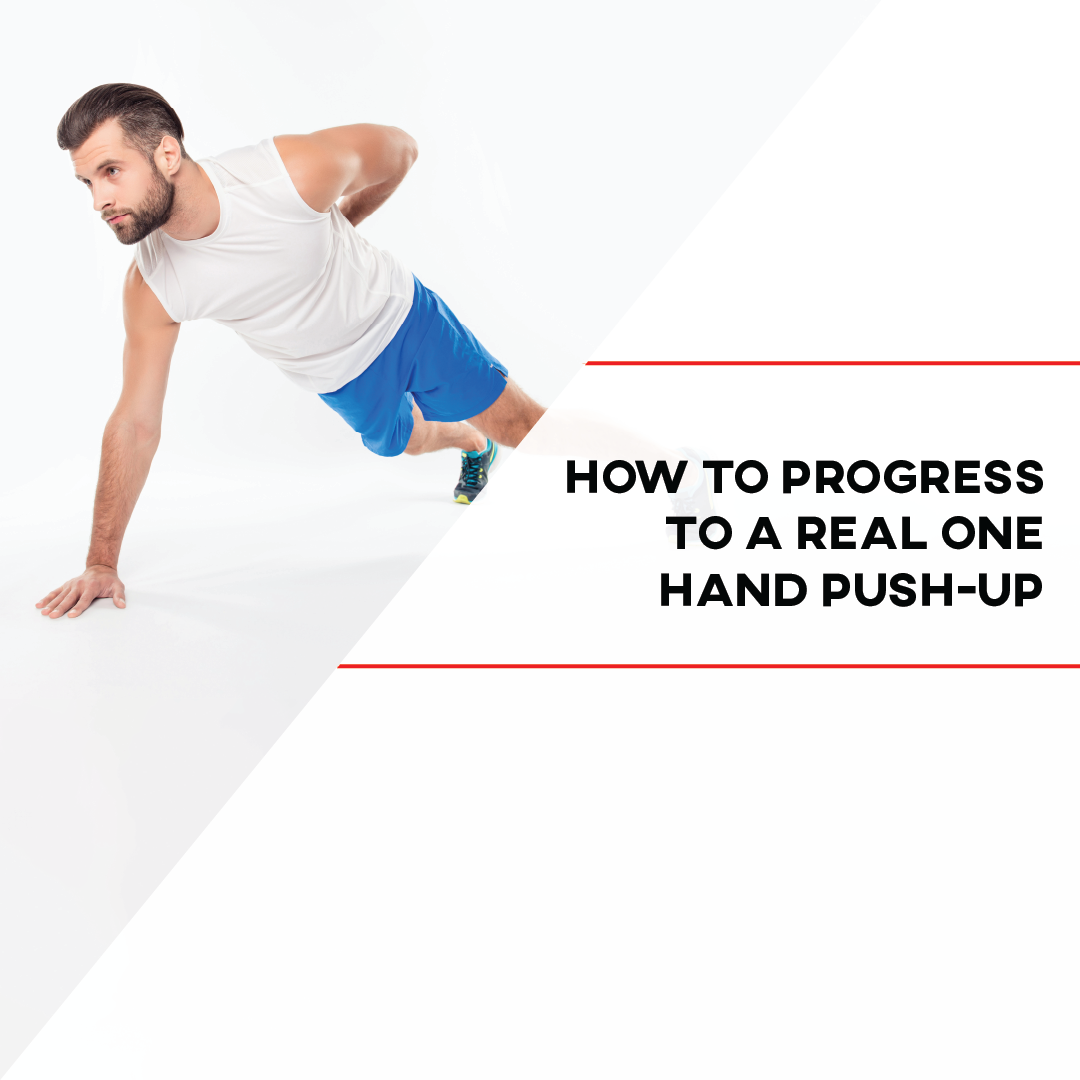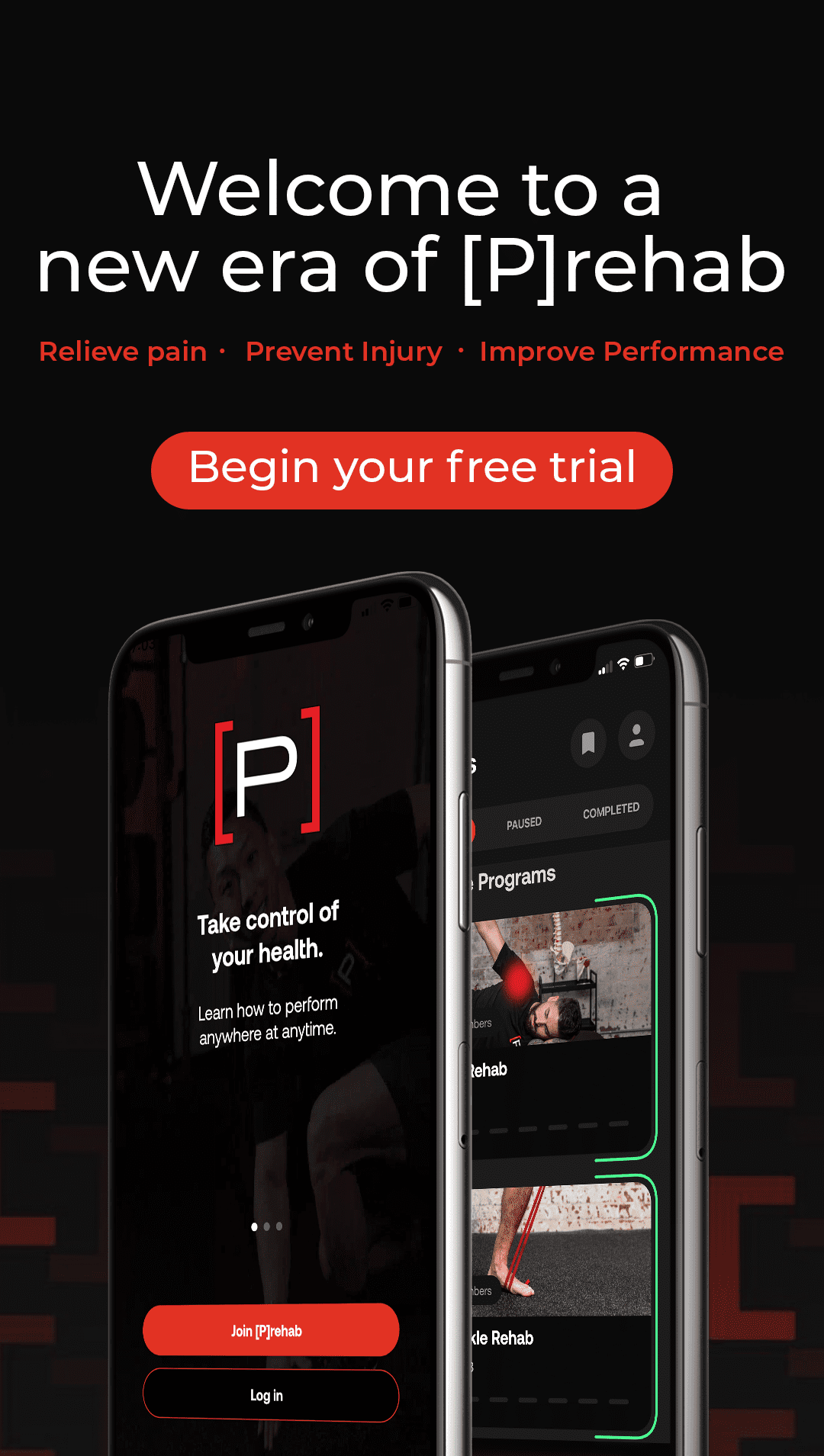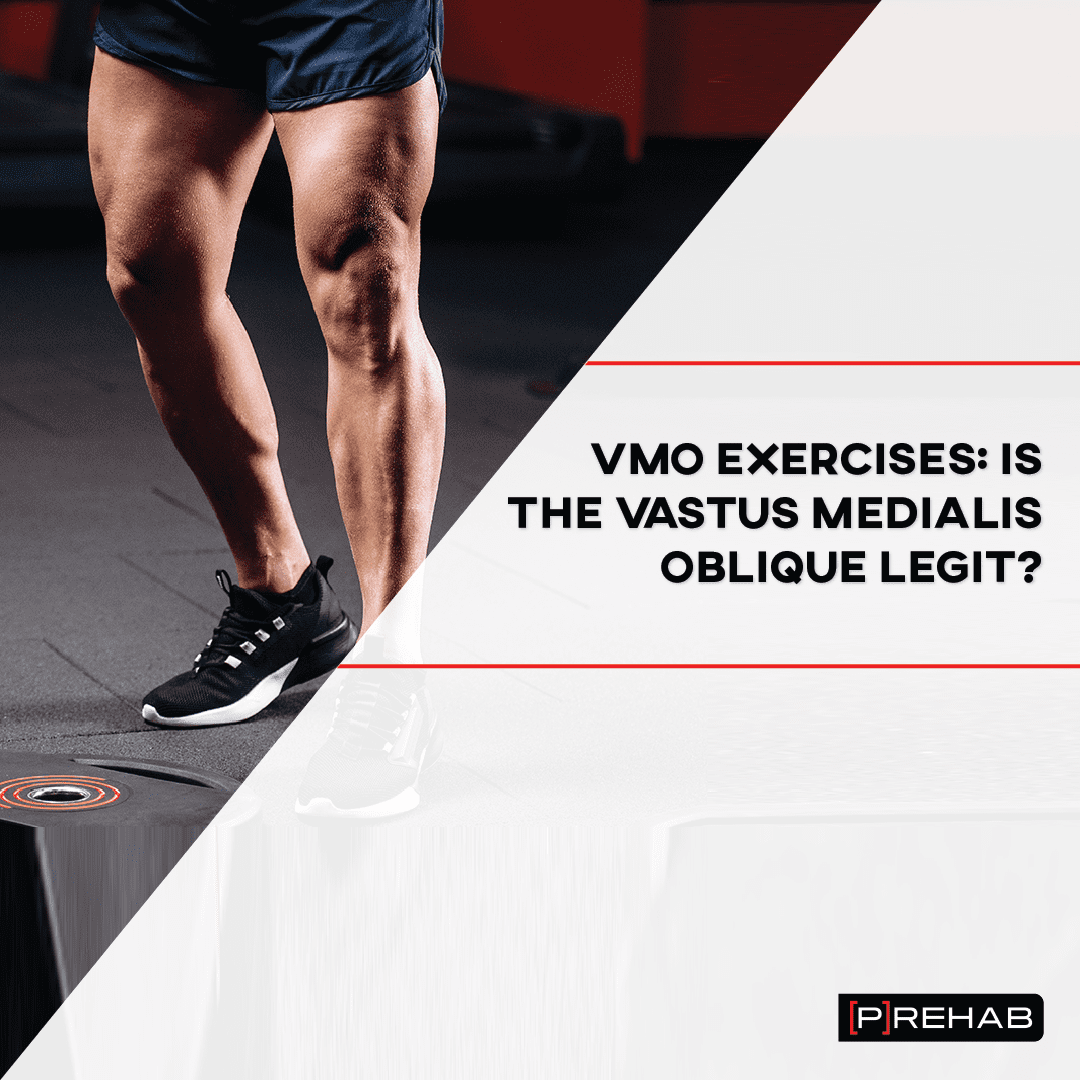
Are VMO exercises real? Is the vastus medialis oblique legit? For years surgeons, physical therapists, and amateur bodybuilders have been trying to activate, strengthen, and grow their vastus medialis oblique (VMO). Many people with pain at their kneecap or who are recovering from a knee surgery are told to “target their VMO” during their rehab. Bodybuilders call it the “teardrop” muscle of their leg and try to isolate and grow it. A quick google search will reveal thousands of hits for the “best exercises to target your VMO”… so can you actually do it? Let’s find out.
What is the VMO?
What is your VMO? Why is everyone trying to target it? Can you actually isolate it? And what is the best way to strengthen it?
Let’s start with what it is.
The VMO or Vastus Medialis Oblique is a part of your quadriceps muscle. Your quadriceps muscle is made up of 4 different muscles in your thigh that come together at your quadriceps tendon to pull on your kneecap and extend your knee, among other actions. These muscles include the:
- Rectus Femoris
- Vastus Lateralis
- Vastus Intermedius
- Vastus Medialis
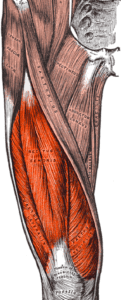
From Wikimedia
Your Vastus Medialis is further subdivided into the Vastus Medialis and Vastus Medialis Oblique. That is a long-winded way of saying your VMO is just a part of one of the four muscles of your quad. So why does it get so much attention? Why does anyone care about the VMO?
Is Knees Over Toes Good or Bad?
Learn more about the role the quadriceps play in healthy knee mechanics, the role they play in the “dreaded knee over toes” motion, and why this motion SHOULDN’T be avoided in this video!
Why Talk About the VMO & Specifically VMO Exercises?
The VMO gets all this attention because of the orientation of its fibers. As you could see in the graphic above, the VMO has the most oblique orientation of all the parts of your quadriceps, hence the name. Since many in the orthopedic community believed that kneecap pain (patellofemoral pain syndrome) was the result of your kneecap not moving properly in the groove, they thought isolating the VMO would be a good way to fix it.
LEARN MORE ABOUT OUR KNEES OVER TOES PROGRAM
Looking for a knees-over-toes program? More importantly, are you having trouble with knee over toes movements or exercises like going downstairs, squatting, or lunging? Our [P]Rehab version of knees over toes programming is our Patellofemoral (kneecap joint) Pain Program. That’s because the kneecap tends to be the pain site or painful source when knee over toes exercises aren’t tolerated. We have a 4-month program designed to improve your knee health and more importantly improve your knees over toes capacity! For more information, click HERE.
One such theory goes like this: your patellofemoral joint is like a train sitting on its tracks. Your knee cap is the train, and the trochlear groove of your femur is the tracks. Pain results from an asymmetrical pull on your kneecap leading it to track laterally in the groove. This is attributed to tight lateral structures (like a tight IT band) and weak medial structures (i.e. a weak VMO).
LISTEN: SHOULD YOU BE FOAM ROLLING?
What role does foam rolling play in releasing tight muscles or tissues such as the IT band? When and why should we be using a foam roll? Find out in the above podcast!
So, your kneecap hurts because your tight IT band is pulling it laterally, while your weak VMO isn’t strong enough to pull it medially and keep it in the groove. So, you need to stretch your IT band and isolate your VMO right?
While this seems to make a ton of sense, lots of research has shown that this is unlikely to be the case. This includes:
- Studies of young females with patellofemoral pain that resolved showed no changes in patellofemoral tracking (1).
- Taping designed to correct the alignment of the patella helped with the pain but did not alter patella tracking as shown on MRI (2).
- VMO atrophy was noted in patients with patellofemoral pain, but so was overall quadriceps atrophy (3).
So it seems kneecap pain may not be the result of patella maltracking and that your VMO is no more important than any of the other parts of your quadriceps in addressing patellofemoral pain.
The Prehab membership is the anti-barrier solution to keeping your body healthy. Access state-of-the-art physical therapy, fitness programs, and workouts online in the comforts of your own home or gym! Taking control of your health with exercise & education from the palm of your hand has never been easier. Get access to 50+ programs, 100+ unique workouts, and 3000+ exercises to build your own workout routines. Trial it for free, and learn how to get out of pain, avoid injury, and optimize your health with [P]rehab!
So Can you Isolate the VMO with VMO Exercises?
A systematic review combined 20 different papers investigating whether or not we can isolate the VMO with VMO exercises. These papers all used electromyography (EMG) to evaluate the activation of various parts of the quadriceps during supposed VMO isolation exercises. Of these 20 papers, 17 found that you cannot even preferentially activate your VMO, let alone isolate it. The author also found significant flaws in the construction of the 3 studies that did find any evidence for VMO preferential activation. This leads the author to conclude:
“It is therefore recommended that clinicians should not focus on VMO strengthening, in preference to general quadriceps training when rehabilitating patients with patellofemoral disorders, because this may not be possible (4).”
READ: QUAD ACTIVATION AFTER SURGERY
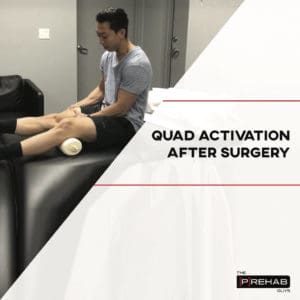
To further support this claim, an anatomical study found that the VMO may not even exist! Noting that the VMO was not found to be truly independent of the other part of the vastus medialis, the VML. Furthermore, the nerves that activate these different parts of the vastus medialis are not independent. Therefore, without independent neural innervation to your VMO, you wouldn’t be able to independently activate your VMO (4).
But the good news is…you don’t need to over stress VMO exercises!
Whether dealing with patellofemoral pain or simply trying to build your “teardrop” thigh for aesthetics, generalized quad strengthening will address both as compared to just trying to isolate the VMO with VMO exercises because you truly can’t. The Academy of Orthopaedic Physical Therapy lists quadriceps strengthening, along with lateral hip strengthening as an A-level recommendation for treating patellofemoral pain! Below you will find some great exercises to get you started (5)!
Exercises for Quadricep Strengthening
Single Leg Squat – Terminal Knee Extension
Sample Knees Over Toes Prehab Program Exercise
Spanish Squat
The Spanish Squat as demonstrated here is one of the best exercises to truly target your quadriceps muscle. Trust us, after a few minutes of performing this exercise, your quads will be burning!
Sample Knees Over Toes Prehab Program Exercise
Anterior Step Down – Wedge
To further emphasis quadriceps strengthening, perform a squat motion on a wedge. This will force your knee in a controlled manner to advance over your toes allowing for maximum quadriceps activation!
Sample Knees Over Toes Prehab Program Exercise
LEARN MORE ABOUT OUR KNEES OVER TOES PROGRAM
Check out our knees over toes prehab program if you’re dealing with any kneecap or anterior knee pain! For more information, click HERE.
VMO Exercises – Closing Thoughts:
Isolating the VMO has long been viewed as the holy grail of patellofemoral pain rehab. Recent evidence has shown that the theories supporting this, including the idea of patella maltracking, are not well supported by research. Further evidence has shown that it is extremely unlikely that individuals can isolate or even preferentially activate their VMO in comparison to the rest of their quadriceps.
The good news is that we know isolated quadriceps strength can be achieved and that improving quad strength and size will improve VMO strength and size as well. We also know that a robust quadriceps strengthening program is one of the best things we can do to improve patellofemoral pain syndrome. So, train your quads and you’ll be training your VMO!
References:
- Carlson VR, Boden BP, Shen A, Jackson JN, Alter KE, Sheehan FT. Patellar Maltracking Persists in Adolescent Females With Patellofemoral Pain: A Longitudinal Study. Orthop J Sports Med. 2017;5(2):2325967116686774. Published 2017 Feb 8. doi:10.1177/2325967116686774)
- Ho KY, Epstein R, Garcia R, Riley N, Lee SP. Effects of Patellofemoral Taping on Patellofemoral Joint Alignment and Contact Area During Weight Bearing. J Orthop Sports Phys Ther. 2017;47(2):115-123. doi:10.2519/jospt.2017.6936)
- Pattyn E, Verdonk P, Steyaert A, et al. Vastus medialis obliquus atrophy: does it exist in patellofemoral pain syndrome?. Am J Sports Med. 2011;39(7):1450-1455. doi:10.1177/0363546511401183)
- Smith TO, Bowyer D, Dixon J, Stephenson R, Chester R, Donell ST. Can vastus medialis oblique be preferentially activated? A systematic review of electromyographic studies. Physiother Theory Pract. 2009;25(2):69-98. doi:10.1080/09593980802686953)
- Willy RW, Hoglund LT, Barton CJ, et al. Patellofemoral Pain. J Orthop Sports Phys Ther. 2019;49(9):CPG1-CPG95. doi:10.2519/jospt.2019.0302)




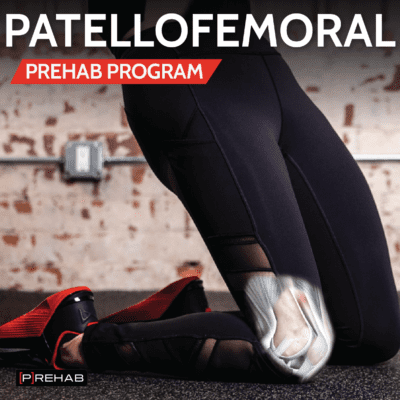
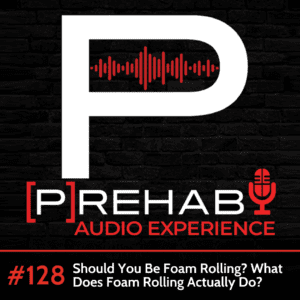
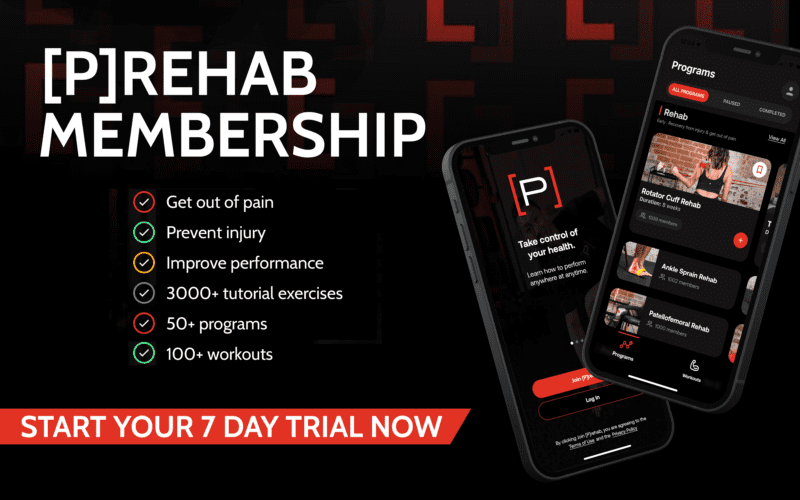
 Tommy Mandala is a Doctor of Physical Therapy, Board Certified Clinical Specialist in Sports & Orthopedics, and Certified Strength and Conditioning Specialist in New York City. He is the founder of ALL IN ACL, a digital coaching platform dedicated exclusively to helping ACLers return to the life they had before their injury with full confidence in their knee. Prior to that, he worked in the sports clinic at Hospital for Special Surgery, the #1 Orthopedic Hospital in the country. While there, he had the opportunity to hone his skills as an ACL specialist working closely with world renowned surgeons and evaluating patients from all over the world. He completed his sports residency training at the University of Delaware where he had opportunities to work with many of their Division I sports teams as well as the Philadelphia 76’ers NBA G-league affiliate, the Delaware Blue Coats. He also trained at Champion Sports Medicine in Birmingham, Alabama where he had the opportunity to learn from researchers in the American Sports Medicine Institute. Currently, Tommy works exclusively with ACLers through his digital coaching model. While many of these clients are athletes, Tommy works with ACLers of all different abilities helping them to build the strength they need to overcome this unique injury. One of his favorite aspects of his job is taking active clients who have never been a “gym person” before and showing them the amazing things that happen when they learn to strength train.
Tommy Mandala is a Doctor of Physical Therapy, Board Certified Clinical Specialist in Sports & Orthopedics, and Certified Strength and Conditioning Specialist in New York City. He is the founder of ALL IN ACL, a digital coaching platform dedicated exclusively to helping ACLers return to the life they had before their injury with full confidence in their knee. Prior to that, he worked in the sports clinic at Hospital for Special Surgery, the #1 Orthopedic Hospital in the country. While there, he had the opportunity to hone his skills as an ACL specialist working closely with world renowned surgeons and evaluating patients from all over the world. He completed his sports residency training at the University of Delaware where he had opportunities to work with many of their Division I sports teams as well as the Philadelphia 76’ers NBA G-league affiliate, the Delaware Blue Coats. He also trained at Champion Sports Medicine in Birmingham, Alabama where he had the opportunity to learn from researchers in the American Sports Medicine Institute. Currently, Tommy works exclusively with ACLers through his digital coaching model. While many of these clients are athletes, Tommy works with ACLers of all different abilities helping them to build the strength they need to overcome this unique injury. One of his favorite aspects of his job is taking active clients who have never been a “gym person” before and showing them the amazing things that happen when they learn to strength train.